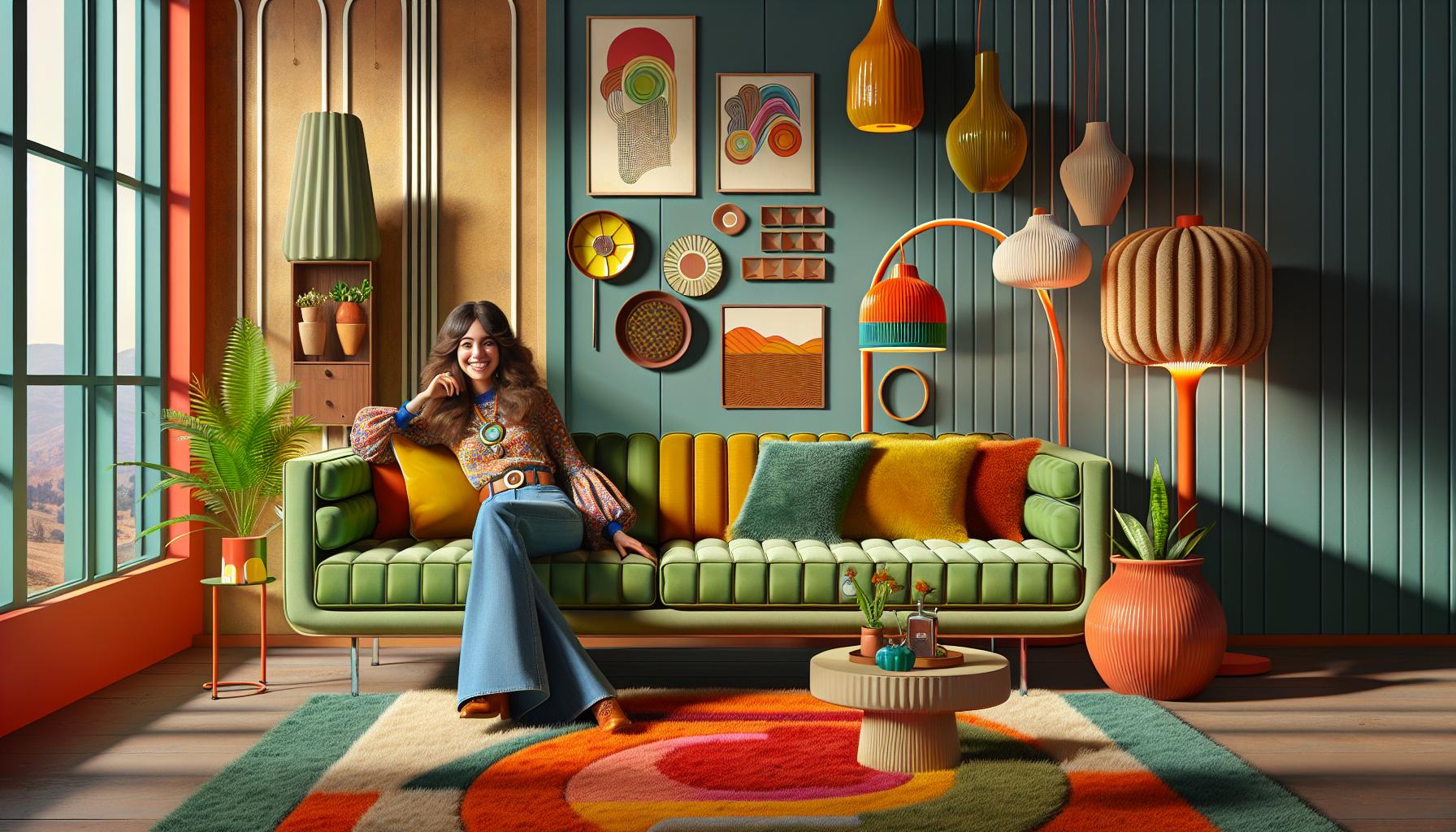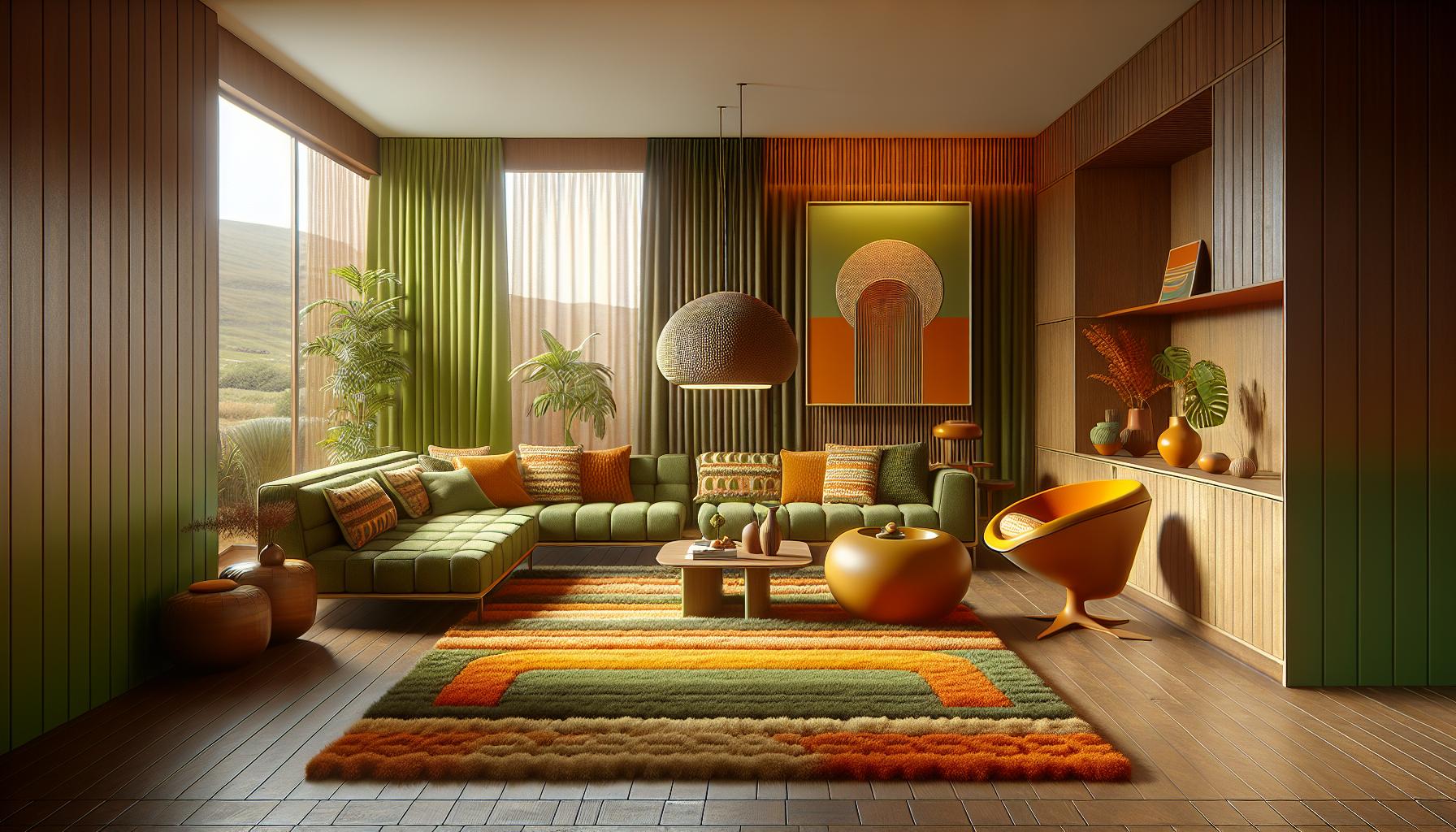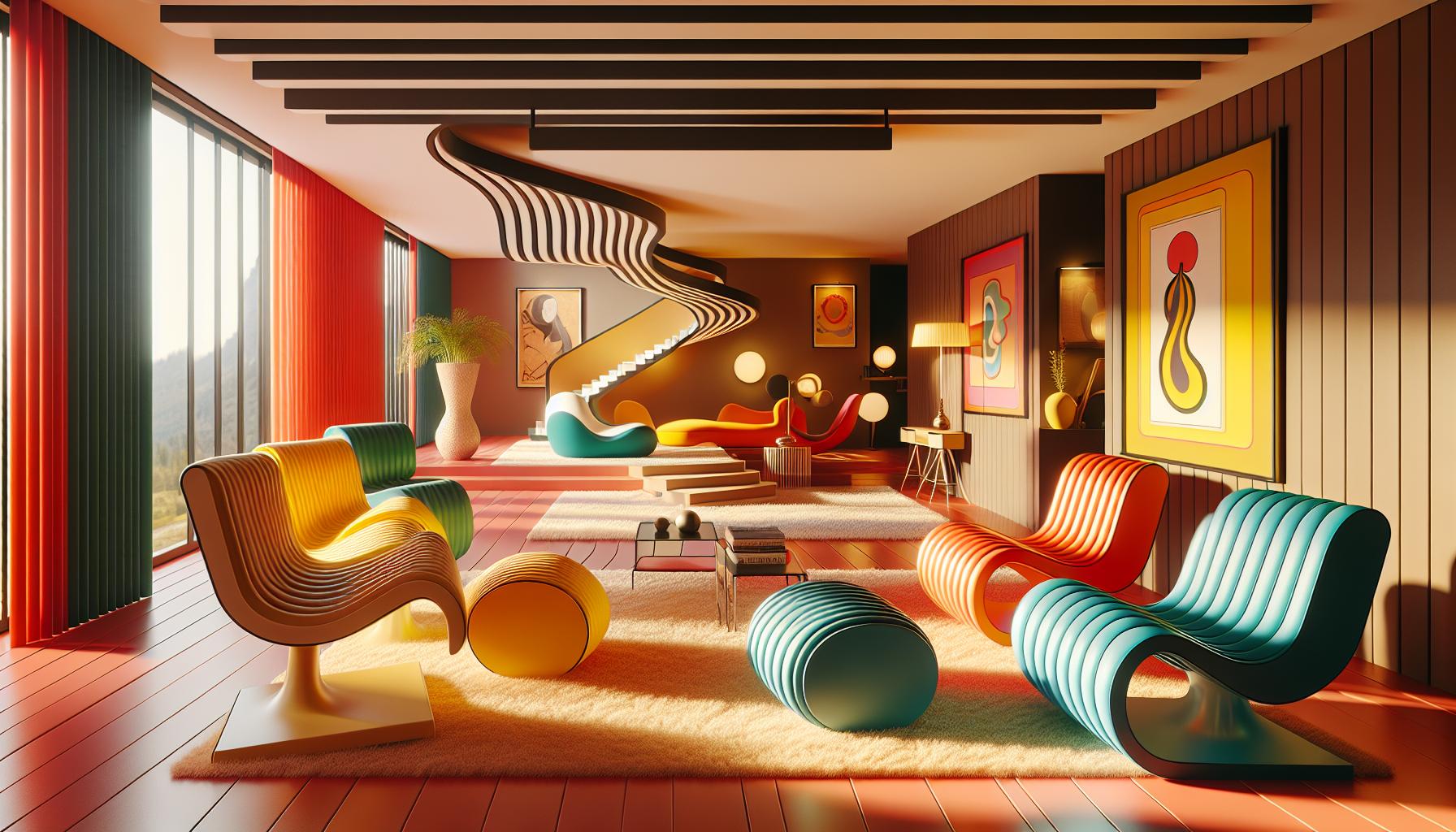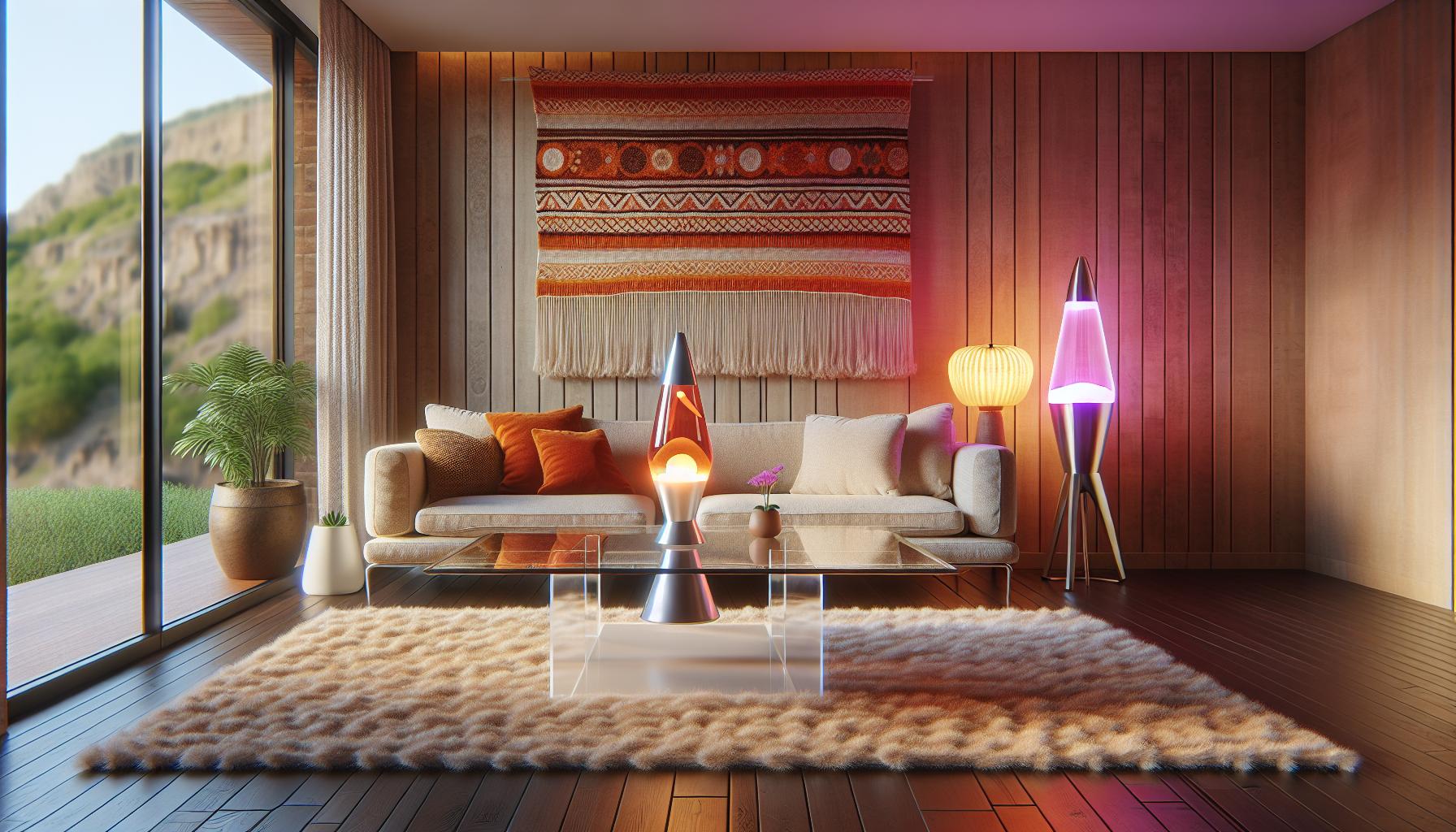
When I think of 70s modern interior design, I envision bold colors, eclectic patterns, and a sense of freedom that defined an era. This design style was all about breaking away from tradition and embracing creativity, resulting in spaces that felt both vibrant and comfortable. The 70s brought a unique blend of natural elements and futuristic touches, creating interiors that were as dynamic as they were inviting.
The resurgence of 70s modern design in today’s homes isn’t just about nostalgia—it’s a testament to the timeless appeal of its aesthetic. With its mix of organic materials and innovative shapes, this style offers a perfect balance of warmth and sophistication. Whether you’re drawn to its iconic furniture pieces or the playful use of textures, 70s modern design continues to inspire and captivate those seeking to infuse their spaces with character and flair.
Key Takeaways
- 70s modern interior design is characterized by bold colors, eclectic patterns, and a fusion of natural and futuristic elements that create vibrant, inviting spaces.
- The style mixes organic materials like wood and stone with innovative design forms such as geometric shapes, offering a balance of warmth and sophistication.
- Iconic design elements include earthy tones, textured furnishings like shag rugs and wicker furniture, and unique lighting fixtures that serve as focal points.
- Influential designers like Verner Panton, Ettore Sottsass, and Eero Aarnio shaped the 70s design landscape with their creative and forward-thinking approaches.
- To incorporate 70s elements today, blend retro decor pieces with contemporary elements for a harmonious and dynamic interior aesthetic.
70s Modern Interior Design
70s modern interior design embraces bold colors and eclectic patterns to restore the era’s sense of freedom and creativity. Natural materials like wood and stone, coupled with futuristic touches such as geometric shapes and vibrant hues, define this style. This design approach merges organic elements with innovative forms to create spaces that feel both warm and sophisticated.
Wicker furniture and shag rugs serve as striking examples of 70s decor, illustrating how texture plays a vital role in this aesthetic. Iconic color palettes feature earthy tones like avocado green and burnt orange, adding depth and a retro charm. Each design element contributes to creating spaces that invite personality and character.
Incorporating unique lighting fixtures, such as pendant lamps or floor-standing arc lights, brings out the era’s futuristic flair. These elements not only provide illumination but also serve as focal points in rooms. Cohesive decor comes from mixing and matching distinctive design pieces, adding a playful yet refined touch to interiors.
Today, 70s modern interior design appeals to those seeking originality and character for their space. This timeless style balances natural beauty with inventive design, making it a beloved choice for anyone looking to craft inviting, memorable environments.
Key Elements of 70s Modern Design

70s modern design captures the essence of bold expression and vibrant creativity. It embodies a distinctive mix of colors, patterns, and textures that define the era’s iconic style.
Color Palette
Colors in 70s modern design stand out for their earthy and lively tones. Avocado green, mustard yellow, and burnt orange often feature prominently. These colors create warmth and depth, offering an inviting atmosphere. By combining these hues thoughtfully, I can enhance spaces with retro charm while maintaining a sophisticated balance.
Patterns and Textures
Patterns play a crucial role in establishing the visual identity of 70s interiors. Geometric shapes and psychedelic motifs dominate, adding energetic and dynamic elements to rooms. Textures, too, are vital, and using shag rugs or woven wall hangings brings a tactile dimension. By contrasting these elements with smoother surfaces, I highlight the era’s adventurous spirit while preserving harmony.
Furniture Styles
Furniture from this period displays a blend of comfort and innovation. Pieces often feature clean lines and organic forms, with materials like teak and wicker being prevalent. Iconic furniture, such as molded plastic chairs and modular sofas, reflects the innovative ethos of the time. Incorporating these styles helps me achieve a balance of functionality and flair in modern interiors.
Influential Designers of the Era

Several designers in the 70s left a remarkable impact on modern interior design. Their innovative approaches and creative visions continue to inspire contemporary spaces.
- Verner Panton – Known for his pioneering use of plastics and vibrant colors, Verner Panton embraced bold, futuristic aesthetics. His iconic works, like the Panton Chair, reflect the decade’s penchant for fluid forms and vivid hues.
- Ettore Sottsass – A key figure in the Memphis Group, Ettore Sottsass combined colorful patterns and playful forms. His furniture design brought an experimental edge to interiors, emphasizing individuality and creative expression.
- Charlotte Perriand – Her focus on functionalism and respect for natural materials made Charlotte Perriand’s designs timeless. She integrated modular furniture and innovative layouts to create cozy, adaptable spaces.
- Joe Colombo – Renowned for his forward-thinking concepts, Joe Colombo’s modular designs and multi-functional furniture epitomize 70s innovation. Pieces like the Elda Chair exhibit both comfort and cutting-edge style.
- Eero Aarnio – Famous for incorporating unconventional materials, Eero Aarnio introduced whimsical pieces such as the Ball Chair. His designs transcend traditional aesthetics by incorporating playful geometry and organic forms.
These designers significantly shaped the 70s modern interior design landscape with their unique perspectives and pioneering spirit. Their contributions continue to influence how we perceive and create inviting environments today.
Iconic Decor Pieces

Acrylic Furniture often features in 70s decor, with pieces like clear acrylic coffee tables and chairs showcasing minimalist appeal and facilitating the era’s signature open spaces. Macramé Wall Hangings contribute earthy texture, reflecting the natural elements central to 70s design. Lava Lamps, with their hypnotic, psychedelic presence, serve as quintessential symbols of the decade’s eclectic spirit.
Sunburst Mirrors embody glamorous flair and bold expression, drawing attention with their unique design and reflective quality. Funky Sculptures, often crafted from materials like resin or metal, introduce artistic elements that emphasize creativity and individualism. Platform Sofas offer both comfort and style, a hallmark of the era’s innovative approach to furniture.
Vinyl Record Players highlight a musical, nostalgic aspect of 70s interiors and act as both functional and decorative pieces. Terracotta Plant Pots enhance natural beauty by integrating greenery into living spaces, aligning with the era’s emphasis on holistic aesthetics. These decor pieces capture the distinctive essence of 70s modern interior design, ensuring that its vibrant creativity and impactful elements continue to inspire today’s homes.
How to Incorporate 70s Design in Today’s Homes
Incorporating 70s design into modern interiors integrates bold expression and retro charm with contemporary sensibilities. By selecting the right accents and balancing modern and retro elements, I can create a space that’s both nostalgic and forward-thinking.
Selecting the Right Accents
I focus on adding iconic decor pieces that capture the 70s’ essence. Sunburst mirrors work as striking focal points, while lava lamps bring a playful touch. Including macramé wall hangings introduces texture and warmth to the room. For seating, wicker or rattan furniture complements the natural vibes of the era. I also think about using acrylic furniture for its sleek appeal and functional versatility. Pairing shag rugs with geometric-patterned cushions adds depth and creates an inviting atmosphere.
Balancing Modern and Retro
To maintain harmony in my home, I blend contemporary elements with 70s features. Mixing clean lines of modern furniture with colorful, patterned accessories from the 70s adds visual interest without overwhelming the space. I ensure the color palette, featuring characteristic tones like avocado green and mustard yellow, stays balanced by incorporating neutral hues. By using vintage lighting fixtures such as pendant lamps alongside modern technology, I can create an ambiance that’s both retro and cutting-edge. Integrating plants in terracotta pots not only nods to the natural aspects of 70s design but also keeps the interior fresh and vibrant.
Natural Elements in Innovative Design
Embracing 70s modern interior design offers a unique opportunity to infuse spaces with personality and flair. By blending natural elements with innovative touches, this style creates environments that are both inviting and memorable. The era’s vibrant colors and eclectic patterns bring a sense of freedom and creativity that’s hard to resist. Incorporating iconic decor pieces like sunburst mirrors and lava lamps can seamlessly integrate retro charm into contemporary settings. As I explore this timeless aesthetic, I’m reminded of its enduring appeal and ability to inspire originality. Whether it’s through bold expression or subtle nods to the past, 70s modern design continues to captivate those seeking a distinctive and lively home atmosphere.
